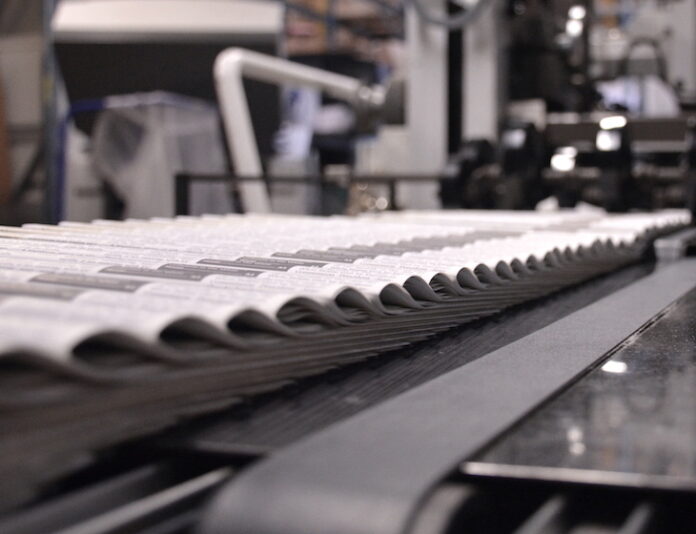There are many kinds of newspapers in the world today, but they all have one thing in common – they cost money to print. This begs the question, how much does it cost to print a newspaper? The truth is that it really depends on where you live and the quality of paper you choose to print your newspaper on. The most expensive type of paper costs around $150 per ton! However, if you’re using the cheapest kind of paper, your costs could be cut down by as much as 50%. So, now you know how much it costs to print a newspaper!
The Budget
Newspapers are one of those things that most people don’t even realize how much they cost to produce, but it turns out they aren’t cheap. In fact, some newspapers have annual budgets that exceed $500 million. To determine how much a newspaper costs to print, you have to look at two numbers: production costs and distribution costs. The printing itself accounts for between 50% and 75% of total costs, while distribution makes up the rest. If you want to know how much it costs to print a newspaper, just add up both percentages.
For example, if your paper costs $200 million in printing and $100 million in distribution, then your entire budget is going to be somewhere around $300 million per year. That may seem like an exorbitant amount of money until you consider that some papers bring in more than half a billion dollars per year from ad revenue alone!
That’s right—they make more money selling ads than they do on subscriptions or newsstand sales combined! If you want your paper to be profitable, then it’s important that you keep these numbers in mind when creating your budget.
Designing the Poster
You will then have to come up with a design that looks great and gets your message across. This is often a difficult step as it requires creativity, but you can use many programs like Photoshop to help. You should also talk to others who have experience in designing posters so they can give you tips on what works and what doesn’t. Once you are happy with your poster design, you need to create a file for printing.
Programs like InDesign make it easy for people with little experience in graphic design software to make a high-quality layout for their print ads. With its simple interface, beginners can easily learn how to set, type and add images to make an eye-catching design that works well when reduced down into postcard size or even smaller.
The biggest challenge of creating a successful print ad is figuring out how to convey your message clearly while still making it look good. If you want advice from professionals, try searching online for free resources about graphic design and advertising that provide information on effective designs. You can also find books at bookstores or libraries that offer guidance on these topics.
Printer Costs
Printers are expensive pieces of equipment and can be found in a variety of formats. Before choosing a printer for your business, you’ll need to consider these factors, from traditional offset printing to low-cost inkjet printers. If you’re planning on using high-quality paper, offset printing is usually recommended. On average, offset printers cost around $100,000 while inkjet printers cost around $5,000; both prices will vary depending on manufacturer and quality. Of course, you’ll also have to factor in consumables like toner or ink when calculating total costs.
If price isn’t an issue: High-end newspaper printers like Heidelberg GTO sheetfed presses or MAN Roland System 3 sheetfed presses (or even web presses) will produce some of the highest quality newspapers possible – but at a hefty price tag of over $1 million each!
Printing Costs
Depending on how many copies you’re printing and how you want to distribute them, your per-copy cost can be as low as a few cents (as with a local paper) or as high as several dollars (if you want to run a full-page ad in The New York Times).
Basically, there are two different types of print costs:
- Variable
- Fixed
Variable costs are based on what it actually costs to produce your product or service. This includes things like ink, paper, and freight for delivery. Fixed costs are those that don’t change no matter how much of your product or service you create; basically, these include salaries for employees and rent/mortgage payments. If you have more than one of either type of cost, they will overlap.
For example, if you own an apartment building where all tenants pay their rent at once each month, then your monthly mortgage payment is both a fixed and a variable cost. If you have fewer than 10 employees who work only when they need to (for example, during tax season), then any salary paid out is both a fixed and a variable cost.
On the other hand, if you run a bakery that has employees working around the clock throughout every day of every year, then your salaries are all fixed costs.
Variable costs can be divided into two categories:
- Marginal
- Sunk
Marginal costs are those that change with how much of your product or service you produce—this includes things like ink for printing presses or food for restaurants.
Fixing or Trimming Tails
Tails are often trimmed by owners or groomers. Smaller dogs need their tails fixed because otherwise, they drag on floors and get in everybody’s way. Dogs with long, fluffy tails also require trimming or fixing to prevent problems such as infections, discomfort, and messes. The cost of a tail fix can vary depending on the breed, age, and location of your dog’s tail. Typically, you can expect to pay between $50-$75 for short-haired breeds, more for long-haired breeds and around $100 for large breed dogs (such as Dalmatians) over 3 years old.
Most vets will charge less than pet stores, but it is usually more convenient to go through a pet store since you can usually drop off your dog directly after work instead of having to make an appointment at a vet’s office. Some veterinarians may even be willing to offer senior citizen discounts or discounts if you bring in multiple pets. Just ask!
Conclusion
Given how many newspapers there are in America, it’s safe to say that newspaper printing services are big business. Like a lot of businesses, though, newspaper printers keep close tabs on their revenues and costs. If a newspaper printer knows their break-even point – which is basically what their cost per unit has to be to achieve profitability – they can make a better budget for high or low demand times. In other words, once you know your break-even number and how much it costs you to print 1,000 copies of a Sunday paper (and if you’re selling them at $1 each), then you can more accurately predict when you might run into a cash crunch.


